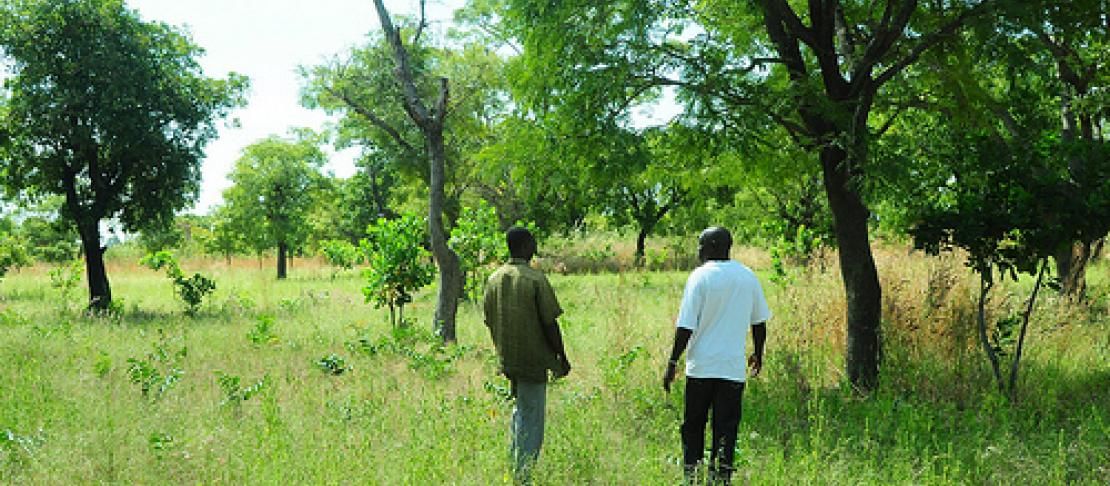Earth is a small REDD+ planet

“Agriculture as a driver of deforestation” is one of a very select list of topics that the new UNFCCC REDD+ work program will tackle in Bonn this month. Optimistic visions are that financed actions to reduce emissions from deforestation and forest degradation will benefit not only carbon storage, but also biodiversity, sustainable agriculture and poverty reduction. Experienced practitioners in conservation and development rightly ask whether such idealistic multiple wins are really possible.The good news is that, yes, countries can simultaneously increase both food production and forest cover. Successful countries – China, Vietnam, India, Bhutan, Costa Rica, El Salvador and Chile – have used combinations of policy measures to incentivize agricultural intensification while regulating land-use zones. But as Eric Lambin and Patrick Meyfroidt point out in "Global land use change, economic globalization, and the looming land scarcity", every single one of these success stories has entailed greater food imports and, by corollary, exporting of land uses and associated emissions to other countries.
Today no country’s land use is immune to global markets. Lambin and Meyfroidt explain four major effects of long-distance flows of goods and capital, all highly relevant to the forest-agriculture interface. First, land use restrictions like REDD+ can displace agriculture to other localities (leakage). Second, agricultural intensification can have a rebound effect by raising returns to agriculture and thereby actually accelerate clearance of forests, grasslands and wetlands. Third, remittances sent from urban to farming areas can provide capital for agricultural expansion. Finally, successive market responses can trigger cascades of unintended effects on land use, as we have seen with biofuels.
What guidance is there for REDD+ and agriculture amid this complexity? Most broadly, the lack of simple drivers at single scales calls for decision-making integrated across different levels. Even local-level governance needs to recognize long-distance flows of goods and capital. Cascade and rebound effects will not be solved by economic incentives alone, but by stronger governance of supply chains and land use. At the national level, agricultural policies and REDD+ readiness proposals could provide operating space for each other, preferably within unifying low-carbon development pathways. The success of investments in agricultural intensification are is highly contingent, but may be most fruitful now in farming systems that have high yield gaps and are less integrated into international markets.
Ultimately, as Lambin and Meyfroidt say, “outsourcing of land use globally is not an option”. We simply do not have enough: without major changes in technology and land use efficiency, any uncontested land reserve will run out before 2050, given demands of between 10 and 26 million hectares per year from urbanization, agriculture and conservation. Global policy frameworks and markets should, in theory, help us allocate land uses most efficiently to meet the needs of all. Let’s hope that the Bonn meeting is a first step to harnessing globalization as part of the solution.
Links:
- Terry Sunderland. April 2011. ‘Win-win’ is too simplistic a description for REDD+ – and possibly wrong - CIFOR Blog.
- Lambin EF and Meyfroidt P. 2011. Global land use change, economic globalization, and the looming land scarcity. PNAS March 1, 2011 vol. 108 no. 9 3465-3472. doi: 10.1073/pnas.1100480108.
- The Terrestrial Carbon Group Project. 2010. Agricultural Expansion and REDD+: An Assessment of Risk and Considerations to Inform REDD+ and Land Use Policy Designs.
- Kissinger G. Forthcoming. Linking forests and food production in the REDD+ context. CCAFS Working Paper no. 1. CGIAR Research Program on Climate Change, Agriculture and Food Security (CCAFS). Copenhagen, Denmark. Available online at: www.ccafs.cgiar.org on 8 June 2011.
- Arild Angelsen and David Kaimowitz (Eds.). 2001. Agricultural Technologies and Tropical Deforestation CAB International, Wallingford, UK.
This blog is part of the series AgClim Letters, a monthly commentary on science and policy written by Sonja Vermeulen, Head of Research for CCAFS. Sign up to receive this as an email bulletin. Your comments are welcome below.


